
Melina Grin / Cats.com
Purring is the most distinct and captivating sound produced by cats. It has intrigued cat owners and researchers for centuries. Although purring is typically associated with a happy and content cat, the reasons why cats purr are complex and varied, and no one is entirely certain why cats purr.
This article explores the various hypotheses and recent scientific explanations surrounding the phenomenon of purring in cats.
The Mechanism Behind the Feline Purr
Before examining why felines purr, it’s essential to understand how they produce this unique sound.
How Do Cats Purr?
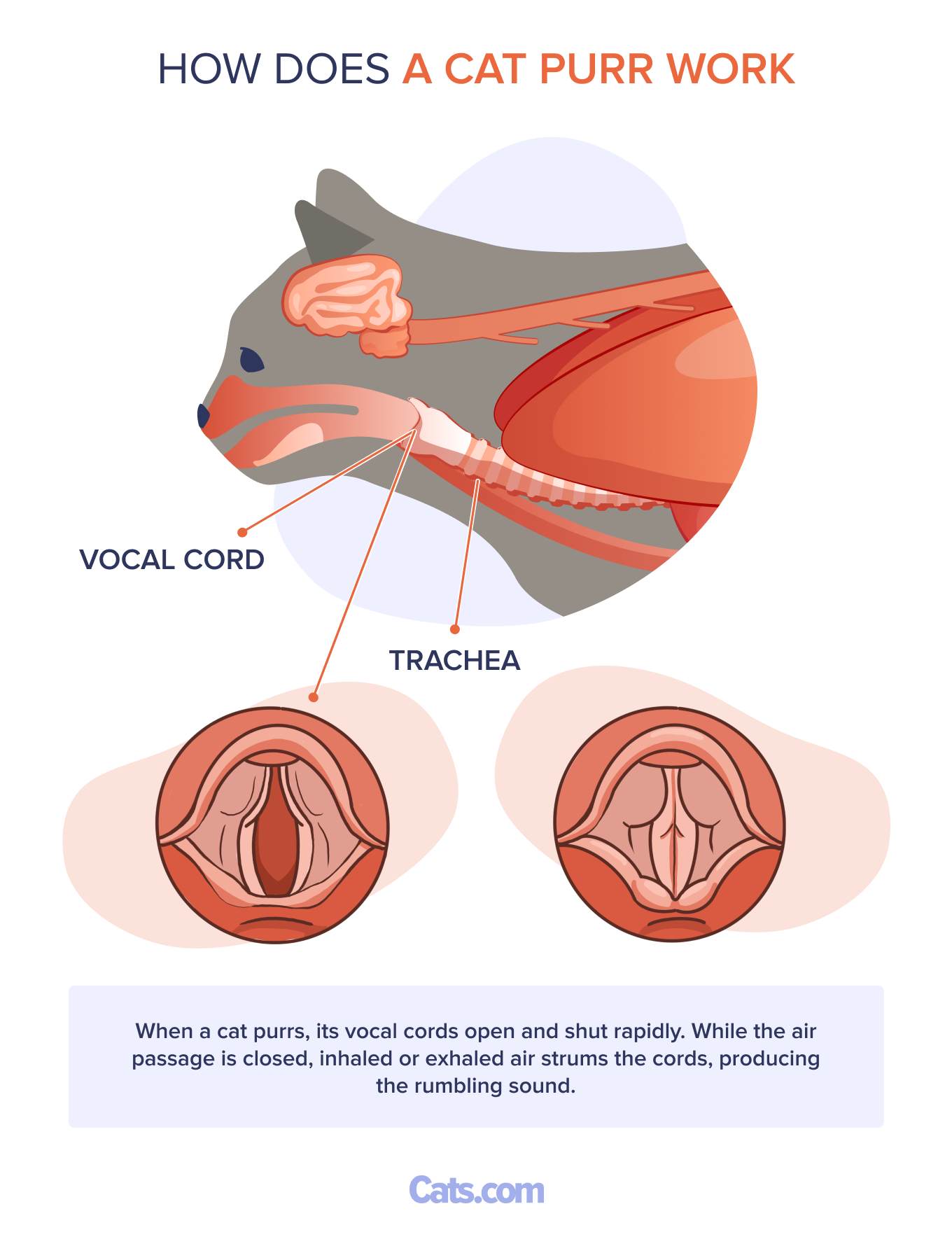
The purr is the vocalization that has been studied extensively; however, the exact mechanism is still not fully understood. Cats begin to purr at an early age, producing the sound with their mouths closed.
Purring begins in the central nervous system, where repetitive signals from the brain are transmitted to the muscles in the larynx (voice box). These signals cause the laryngeal muscles to twitch rapidly, quickly separating the vocal cords during inhalation and exhalation. This separation produces the characteristic sound of purring.
The duration of purring can range from less than a second to several minutes and may be accompanied by other tonal vocalizations. The pitch of a purr is typically low, with its fundamental frequency significantly lower than that of the cat’s meow. Furthermore, purring can increase or decrease the respiratory rate even when the cat rests.
Interestingly, each cat’s purring frequency is unique to them, just like a fingerprint!
What Is the Frequency of a Cat’s Purr?
The average vibrational frequency of a cat’s purr ranges from 25 to 150 Hertz (vibrations per second). The tone of a cat’s purr can vary depending on the individual cat’s needs and its emotional state. Contrary to popular belief, purring can differ subtly and is used in various situations. Low-frequency purring can have a calming effect not only on the cat itself but also on other pets and even humans.
Did you know that the loudest purr ever recorded from a domestic cat was 67.8 decibels? That’s as loud as some air conditioners or dishwashers.
Do All Cats, Both Big and Small, Purr?
No. Big cats like lions, tigers, leopards and jaguars can’t purr. Cougars, cheetahs, lynxes and bobcats can purr like our domestic felids. Big cats cannot purr due to anatomical differences in their voice boxes. Unlike smaller cats that can purr, big cats have a ligament instead of one of the bones found in the larynx of smaller cats. This ligament allows for more significant stretching and contributes to their ability to roar, but it also prevents them from purring.
The Latest Science Behind Purring

Purring is believed to be a way of calming down in a stressful or difficult situation. Melina Grin / Cats.com
New Findings Unravelling the Mystery of a Cat’s Purr
Recent research has revealed that cats possess specialized structures within the vocal box called ‘pads’. This study investigated the fundamental frequency ranges of eight domestic cat larynges in an excised setup to test the active muscle contractions (AMC) hypothesis.
Contrary to expectations, all eight removed larynges produced self-sustained oscillations at typical purring rates. Histological analysis revealed connective tissue masses in the vocal folds that may facilitate the low frequencies of purring. The unique pads enable them to produce ultra-low-frequency purrs without neural signals or muscular contractions. This marks a new milestone in the explanation of purring.
Technological Investigations
Advancements in technology have allowed scientists and phoneticians to use high-frequency microphones and sonograms to study purring in greater detail. These tools have revealed the complex structure of purring sounds and how they vary across contexts and individual Felidae. Through these studies, researchers hope to gain a deeper understanding of the numerous functions and benefits of purring.
Types of Purrs
Researchers have identified various types of purrs in the human-cat interaction context, each serving a distinct purpose:
- Contentment Purr: The most recognized type of purr, typically heard when your cat feels calm and relaxed.
- Solicitation Purr: Cats use this purr to attract attention or request food from their owners. This sound combines purring and meowing, having a higher pitch and a sense of urgency. Researchers suggest that the “cry-like” sounds made by cats are designed to be impossible for humans to ignore.
- Therapeutic Purr: A therapeutic purr is a low-frequency vibration with self-soothing and healing effects on cats and humans.
Reasons Why Cats Purr
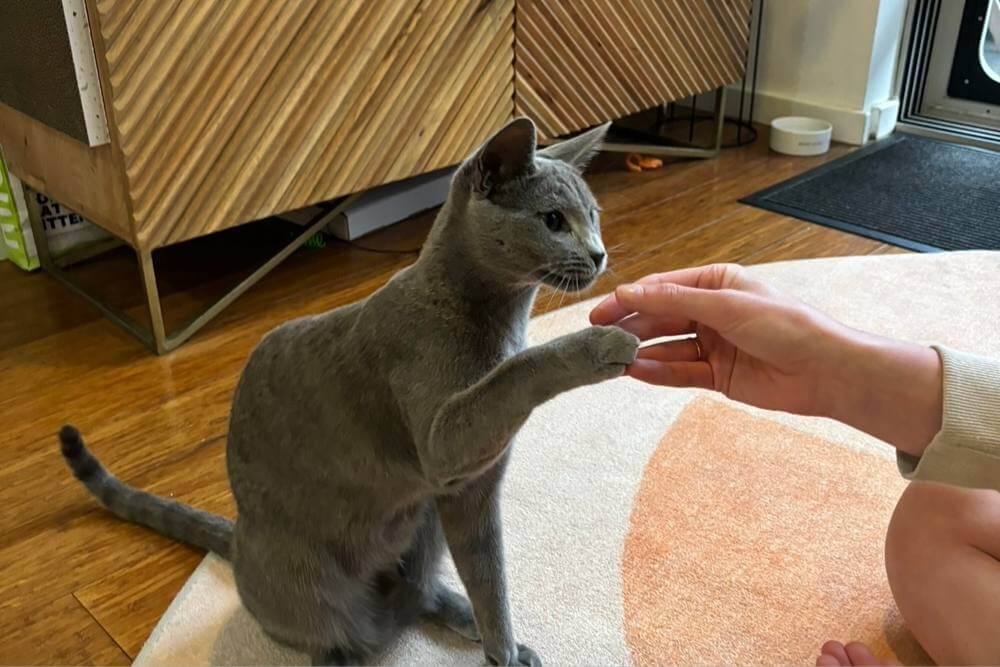
Cats purr to express positive emotions and bond with their owners. Melina Grin / Cats.com
There are several intriguing explanations for this behavior. Here are seven theories about why cats purr.
Kittens Purr as They Bond With Their Mother
Purring behavior starts in kittenhood, although some cats also purr during labor. Kittens are born deaf and blind, relying on their mother to communicate and protect them. When the queen returns to the den, she quietly purrs to her kittens that it is safe to come close, helping them avoid being detected by predators. In response, the kittens suckle while purring simultaneously.
Cats Purr When They Feel Positive Emotions and Bond With Their Owners
You usually hear this type of purr when your cat is content and happy, especially during affection, like being cuddled on your lap or brushed. The purring sound is usually soft and rhythmic, indicating that your cat is content in its environment. The contentment purr also serves as a way for cats to communicate, expressing their enjoyment and trust during bonding interactions with their owners.
Cats Purr When They Interact Socially With Other Felines
Purring plays a vital role in feline social behavior. Cats purr when they groom each other (known as allogrooming), snuggle, or rub against one another. This sound signifies friendliness and familiarity in cat communication and social recognition. Moreover, a cat may also purr when it feels threatened, using this sound to indicate ‘I am not a threat’ to calm a potential opponent. Purring during these interactions helps to build trust and promotes peaceful coexistence among the group.
Felines Purr as a Way To Relieve Stress
The gentle purring of cats offers a calming frequency that effectively reduces stress. This vital feline behavior serves as an essential tool for stress relief. When cats experience anxiety, fear, or threat, their purring provides a profound sense of comfort and security. This resembles how humans sigh or tone gently to soothe their nerves and ease anxiety, highlighting the universal need for self-soothing practices.
Cats Purr To Help Alleviate the Pain Caused by Illness or Injury
Cats often purr when they are seriously ill, injured, or nearing the end of their lives, and this behavior has intrigued both veterinarians and pet owners.
Several theories explain this phenomenon. When a cat is unwell, the quality of its purr can change, signalling to pet owners that attention may be needed. Instead of the typical rhythmic sound, a sick cat’s purring might be more erratic or faint. Additionally, when a cat is ill, the vibrational frequency of its purr can help release endorphins, which act as natural mood enhancers and assist in managing pain while the cat heals.
The Purr of Felids Serves as a Self-Soothing Mechanism
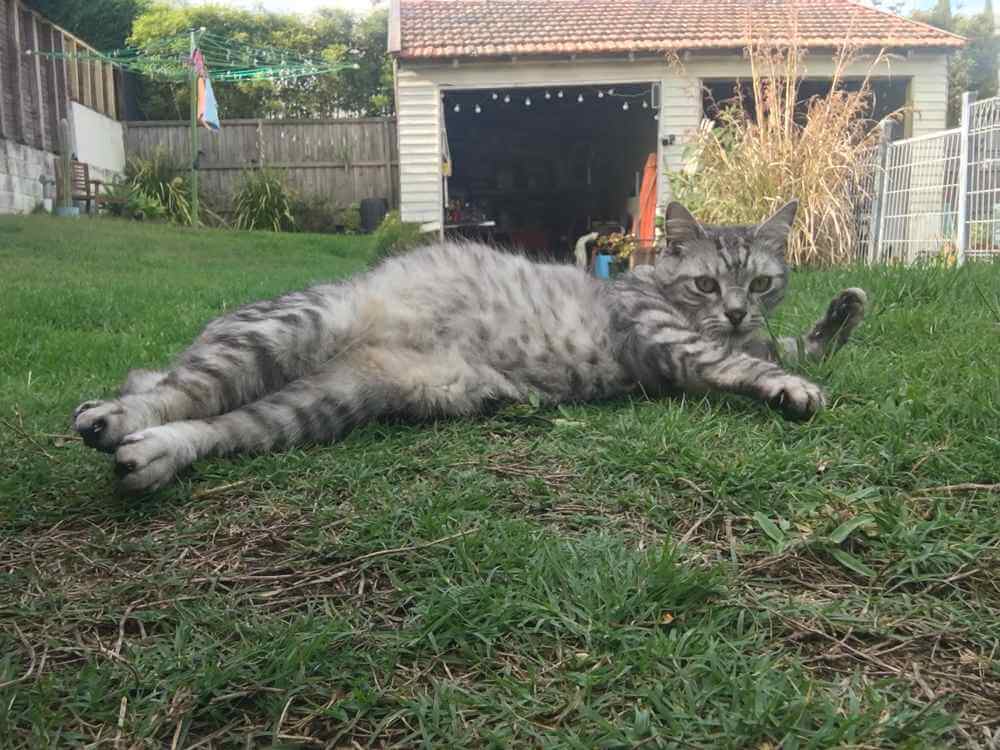
Purring serves as a natural self-therapy mechanism for cats, helping them soothe and heal. Melina Grin / Cats.com
One of the more fascinating theories is that purring is a self-therapeutic mechanism for cats. A study by Elizabeth von Muggenthaler recorded the purrs of 44 felids, including cheetahs, ocelots, pumas, domestic cats, and servals, using a digital audio recorder and accelerometers.
House cats, servals, ocelots, and pumas produced significant frequencies at 25 Hz and 50 Hz, which benefit bone growth and healing. They also demonstrated a harmonic around 100 Hz, which has therapeutic applications for pain relief and wound healing. This internal healing mechanism may improve recovery and help maintain muscle and bone strength during rehabilitation.
Cats Purr To Induce Relaxation and Sleep Better
Purring is more than just a comforting sound; it plays a significant role in cats’ overall well-being. The rhythmic vibrations created during purring have been shown to promote relaxation. A cat’s purr can generate a sense of safety and security in its environment, further contributing to a calm state that promotes better sleep.
To Wrap Up
Purring is a multifaceted behavior that serves numerous purposes in a domestic cat. Scientific research has also shown that a cat’s purr can help improve human health.
While we have learned a great deal about the mechanics and reasons behind purring, it continues to be a topic of ongoing research and fascination. Understanding why cats purr deepens our appreciation for these mysterious and beloved animals, allowing us to better care for them and enhance their well-being.
-
Tavernier C, Ahmed S, Houpt KA, Yeon SC. Feline vocal communication. J Vet Sci. 2020 Jan;21(1):e18. doi: 10.4142/jvs.2020.21.e18. PMID: 32017479; PMCID: PMC7000907.
-
The cry embedded within the purr, McComb, Karen et al. Current Biology, Volume 19, Issue 13, R507 - R508
-
Crowell-Davis SL, Curtis TM, Knowles RJ. Social organization in the cat: a modern understanding. J Feline Med Surg. 2004 Feb;6(1):19-28. doi: 10.1016/j.jfms.2003.09.013. PMID: 15123163; PMCID: PMC10822437.
-
Leventhall G. Low Frequency Noise. What we know, what we do not know, and what we would like to know. Journal of Low Frequency Noise, Vibration and Active Control. 2009;28(2):79-104. doi:10.1260/0263-0923.28.2.79
-
Domestic cat larynges can produce purring frequencies without neural input, Herbst, Christian T. et al. Current Biology, Volume 33, Issue 21, 4727 - 4732.e4
-
The felid purr: A healing mechanism? [email protected], J. Acoust. Soc. Am. 110, 2666 (2001) https://doi.org/10.1121/1.4777098

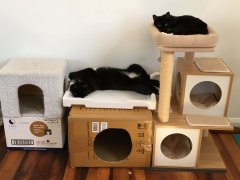

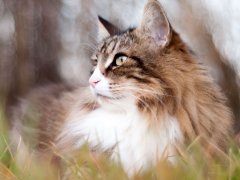
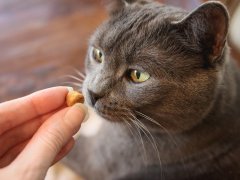

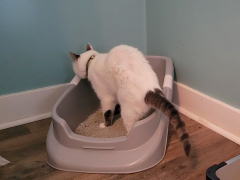

Mew! I agree in every thing, and of course, I love purrrrr
Do you want to se me? Easy, have a look in instagram @mr.oo_thecat
Nice to meet you Mew!
I didn’t realise there was so much to know about purring!!
Cat purr is soo calming!
Love cats and great text!
I love that sound 🙂
Thank you for answering my email,there are 4 kittens
And they all come to me and prrr.
Wow, very informative and interesting!! ?